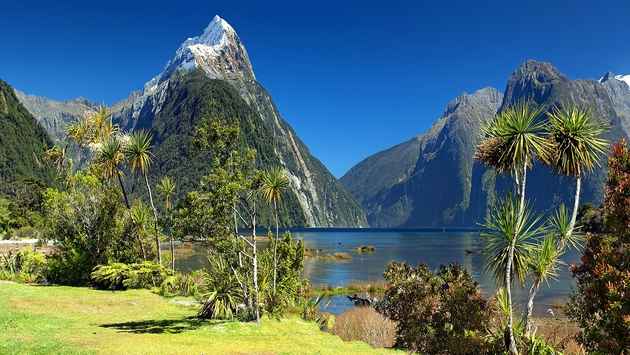For the global tourism industry , COVID-19 might have a small silver lining.

Prior to the pandemic, the zeitgeist surrounding overtourism was growing exponentially in both volume and number as reports came in from popular destinations virtually overrun by Instagram-driven hordes. Residents in popular tourist areas struggled to view the visitor industry as a positive impact on their lives, and visitors, in turn, reported frustrating experiences as a result of overcrowding.
In the spring of 2020, global tourism ceased. Borders closed, airline flights and cruise departures were scrubbed, and hotels shuttered, having been completely deprived of visitor traffic. Scores of workers in tourism and supporting industries were sent out to pasture on temporary furlough or permanent redundancy. Slicks of sunscreen washed off newly emptied tourist beaches and sea life returned.
All talk of overtourism vanished, as discussions in popular destinations turned from coping with visitor traffic to surviving the fiscal year.
Prior to the pandemic, New Zealand ( Aotearoa in the indigenous Maori language) was one of the countries beginning to grapple with early signs of overtourism. New Zealand is a comparatively small country, with a population and land area roughly similar to the state of Colorado, and it welcomed nearly 4 million tourism visitors in 2019—approaching one visitor for every resident. Tourism growth hadn’t quite reached Venice-like saturation, but a few of the country’s most Instagrammable attractions were starting to feel a bit crowded.
In 2018, Tourism New Zealand launched the Tiaki Promise , which began communicating the need for travelers to respect the local environment. The following year the country i ntroduced a levy on international visitors which helps fund conservation and sustainability projects, like increasing the amount of predator-free breeding grounds for endangered indigenous birds.
So, even before overtourism became a pressing issue in New Zealand, the government was planning to make adjustments to ensure future visitors were contributing to the well-being of the country’s environment and residents.
When COVID-19 closed the country’s borders (and they’re expected to remain closed to international tourism through 2021) the economy was doubtless impacted by the overnight cessation of visitor dollars. While the closure might have been a stark reminder of the topline benefits contributed by the visitor industry, at the beginning of the pandemic the New Zealand Government jumped on the opportunity to reshape how tourism affects and benefits the country by establishing the Tourism Futures Taskforce.
Rene de Monchy, Interim Chief Executive at Tourism New Zealand explains, “International visitation is not expected to return to previous volumes for a number of years. This is a fantastic opportunity to ensure that we are well set up to accommodate growth and strategically manage visitation so that it enriches our home. The Tourism Futures Taskforce activity is expected to be instrumental in helping guide this.”
The objective of the public-private partnership is simple: to ensure the future of tourism enriches the wellbeing of New Zealand and New Zealanders. The task force will come back to the government with recommendations in the next several months, but Tourism New Zealand has also been evolving and plans to focus future efforts around four well-being “Capitals”: Economy, Nature, Culture, and Society.
In addition to big-picture efforts, Tourism New Zealand is also hoping to reduce crowding at popular spots by spreading visitors across the calendar year, and promoting less-trafficked parts of the North and South Islands,
“To fully appreciate New Zealand’s diverse landscape and experiences, we encourage [travelers] visit a range of regions across both islands. In Northland, warm tropical weather and Maori culture greet you with open arms. In Gisborne, be one of the first in the world to watch a new day’s sunrise. Down south, Nelson Tasman offers spectacular hiking, kayaking, and artisanal cuisine while the West Coast’s rugged coastline makes for an epic drive. To get really off the beaten track, check out Stewart Island for some amazing stargazing and wildlife viewing,” de Monchy explains.
Other ideas in the works include drawing visitors outside the peak southern summer months of December to February.
“Spring and autumn are beautiful times to travel to New Zealand. In spring, visitors can experience our amazing waterfalls such as in Milford Sound, taste fresh produce in regions like Hawke’s Bay, and see places like Hobbiton in full bloom. In autumn, leaf-peeping is popular in Central Otago, the Great Walks are still in season, and the sun is shining warmly enough for a swim in our rivers and lakes,” says de Monchy.
On when international travelers might be able to return to New Zealand, Prime Minister Jacinda Arden was clear: when New Zealanders were all vaccinated, and there was a solid indication the vaccines would prevent the spread of the virus.
In the meantime, travelers can rest assured that the country’s tourism partners are working to ensure that future visitors will benefit New Zealand in ways that keep the country a desirable destination for both inbound travelers and New Zealanders alike in the coming decades.
The author recognizes the importance of certain Maori language diacritical marks, such as the tohuto (macron), however, some of these have been omitted for web browser compatibility.
Leave a Comment